KNOT TYING
Scroll Down To See Them All
![]()
Timber Hitch


This is an important hitch, especially for dragging a heavy object like a log. It will hold firmly so long as there is a steady pull, slacking and jerking may loosen it. The timber hitch is also useful in pioneering, when two timbers are sprung together. When it is used for dragging, a simple hitch should be added near the front end of the object to guide it.
Bowline

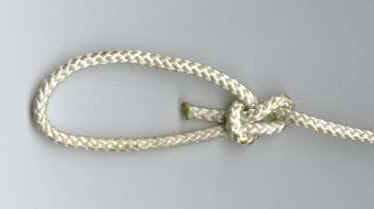
The bowline has been called the king of knots. It will never slip or jam if properly made and, thus, is excellent for tying around a person in a rescue. Begin by formatting an overhand loop in the standing part. Then take the free end up through the eye, around the standing part and back where it cam from.
Clove Hitch

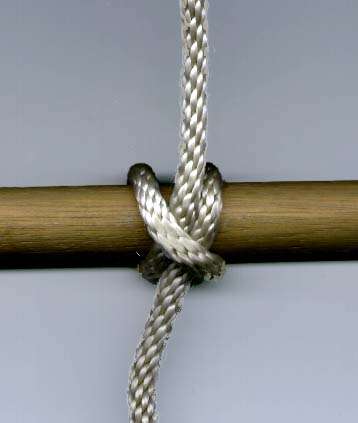
This is one of the most widely used knots. because it passes around an object in only one direction, it puts very little strain on the rope fibers. Tying it over an object that is open at one end is done by dropping one overhand loop over the post and drawing them together. The other method of tying it is used most commonly if the object is closed at both ends or is too high to toss loops over.
Half-Hitch

The half-hitch is the start of a number of other hitches and is useful all by itself as a temporary attaching knot. It will hold against a steady pull on the standing part, especially if a stopper knot like the Stevedore's knot or one of the other figure eight knots is put in the end.
Two Half-Hitches

This is a reliable and useful knot for attaching a rope to a pole or boat mooring. As it's name suggests, it is two half-hitches, one after the other. To fish, push them together and snug them by pulling on the standing end.
Sheet Bend

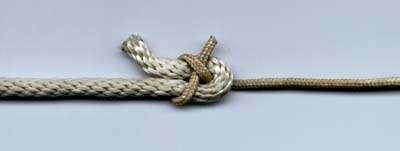
The sheet bend is the most important knot for joining two rope ends, especially if the ropes are of different sizes. Sailor's named it in the days of sailing ships when they would bend (tie) the "sheets & quot" (ropes in the rigging of a ship). Begin with a bight in the large rope. Then weave the end of the smaller rope through the eye, around the bight, and back under itself. Snug it carefully before applying any strain to the knot.
Square Knot
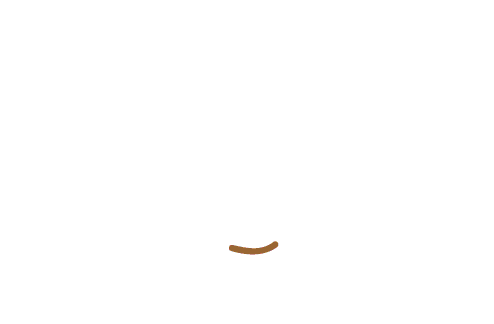

You can loosen the square knot easily by either pushing the ends towards the knot or by "upsetting" the knot by pulling back on one end and pulling the other through the loops.
Taut-line Hitch

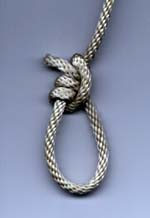
Since it will only slide one way the taut-line hitch is often used on tent ropes. The taut-line hitch will hold firmly on a smooth pole such as a scout stave. Place rope end around pole, make a turn below it, then bring rope up across the standing part, around the pole and tuck through.